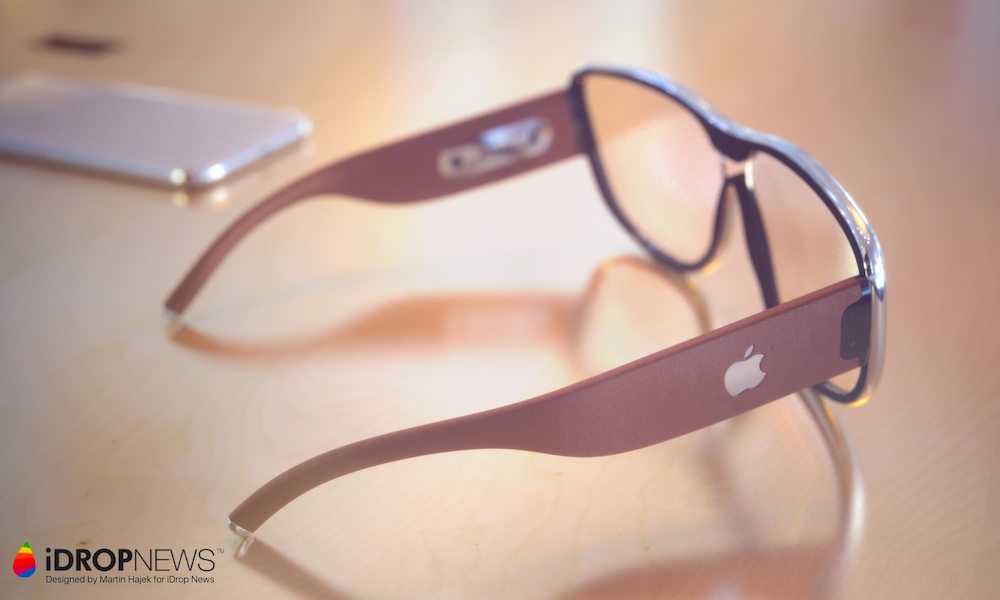Apple Will Release an AR Headset with 3D Scanning in 2022, AR Glasses the Following Year
 Credit: iDrop News / Martin Hajek
Credit: iDrop News / Martin Hajek
Toggle Dark Mode
There’s no shortage of reports, rumours, and speculation that keeps surfacing around Apple’s plans for augmented reality glasses, and reliable analysts have been claiming for at least two years now that an AR headset of some kind could be arriving as soon as next year.
Of course, what form those will take has been anybody’s guess, and we’ve been wondering lately if Apple has actually been working on multiple projects, and now a reliable new report that we won’t see an AR headset until 2022 offers a bit of clarity into what Apple is doing.
Earlier this year, we actually heard reports that Apple had killed the project entirely, although that seemed very doubtful even at the time, and it quickly became apparent that Apple was merely shaking things up internally, which was bolstered by the recent news that Apple was partnering with Valve to produce the device, which analysts reaffirmed couldlaunch next summer.
However, a new report from The Information has thrown a big splash of cold water on that, citing very reliable sources who attended an internal presentation given by Apple’s own executives.
During the presentation, which included a team large enough to fill the massive Steve Jobs Theatre, Mike Rockwell, Apple’s newly-minted head of the AR/VR team, discussed the various features that the company is envisioning for the new headset, including “3D scanning” and “advanced human detection.”
According to the report, Apple is working on an augmented-reality headset in 2022, and a “sleeker” pair of AR glasses for a 2023 release.
A Headset First
One thing that seems clear from the report is that Apple’s first product is going to be an actual AR headset, and not the sleeker pair of glasses that many people were hoping for.
Code-named N301, Apple is going for a design that wil be a slimmer and cooler looking version of the Oculus Quest, and although it’s going to be bulkier than a pair of eyeglasses, it sounds like Apple is trying to get closer to something akin to ski goggles, rather than the gargantuan VR gaming headsets we’re more accustomed to seeing.
The headset itself will apparently merge both AR and VR capabilities, with external cameras that will map out the user’s surroundings and use the high-resolution display to blend virtual objects from the real world. The resolution will apparently be sufficient to allow users to read small type while wearing the headset, and “see other people standing in front of and behind virtual objects.”
To illustrate these capabilities, attendees at the October meeting were shown a recording of a demonstration in which a virtual coffee machine was placed on a real kitchen table surrounded by people in a room. The virtual coffee machine obscured people standing behind it in the room.
The Information
It also sounds like Apple doesn’t intend to play this completely close to the vest, as there are plans to reach out to developers to build software for it starting in 2021, although this will probably be done in the usual quiet way of inviting select developers to participate under NDA, only revealing their projects when Apple is ready to announce the actual hardware device.
Glasses Will Come Next
Apple definitely appears to be doing this in stages, however, and after the headset has come out, the company plans to release a smaller pair of AR glasses.
Apparently there are already prototypes of these in operation, code-named N421, which The Information notes look like “high-priced sunglasses” that have thicker frames for the battery and other circuitry. They may also feature lenses that darken when in operation, as a visual cue to observers that the wearer is otherwise occupied.
According to employees and executives within Apple, the company believes that its AR glasses are the next big step in mobile computing, and wants to poise them to eventually replace the iPhone. Executives suggest that this will happen in “roughly a decade.”
What about 2020?
The new 2022 timeframe still raises a number of questions, including the veracity of supply chain sources that suggest Apple is readying for production, not to mention the code for AR glasses that’s already been discovered in iOS 13.
The supply chain rumours are a bit easier to dismiss, since Apple often lines up its suppliers years in advance to ensure that there will be sufficient quantities of parts and materials on hand when mass production begins, and it stands to reason that this is even more crucial for a radically new product like this.
The code in iOS 13 leaves us scratching our head a bit more — it’s an early appearance for something that may not arrive until iOS 15 is out. While we’ve seen code hints in early iOS versions before — references to dark mode famously appeared in iOS 10, for example — it’s unusual for Apple to tip its hand about a new hardware project this early on. Of course, it’s also equally possible that Apple’s original plans were deemed too ambitious, and this is simply a case of the project having been pushed back to 2022.
Either way, it’s the most solid information we’ve heard yet of Apple’s plans and timeline for its AR headset and glasses products, and one of the few rumours to come out of Apple itself, rather than simply from analysts reading the tea leaves of the supply chain, so this definitely gives us something more concrete to look forward to.
[The information provided in this article has NOT been confirmed by Apple and may be speculation. Provided details may not be factual. Take all rumors, tech or otherwise, with a grain of salt.]






